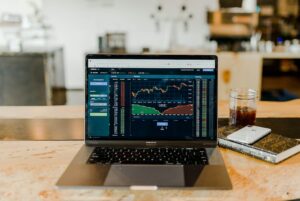The Evolution of the Forex Game: From Manual Trading to Automated Systems
The forex market has undergone significant changes over the years, with technological advancements playing a crucial role in its evolution. One of the most notable changes has been the shift from manual trading to automated systems. This shift has revolutionized the way traders approach the forex market and has brought about several advantages and challenges.
Manual trading, as the name suggests, involves making trading decisions based on human analysis and intuition. Traders would spend hours studying charts, analyzing economic data, and monitoring market conditions to identify potential trading opportunities. Once a trade was identified, the trader would manually execute the trade through a broker’s trading platform.
While manual trading has been the traditional approach to forex trading for many years, it is not without its drawbacks. Human traders are prone to emotions, which can often lead to irrational decision-making. Fear and greed can cloud judgment and lead to impulsive trades or holding onto losing positions for far too long. Additionally, manual trading requires a significant time commitment, as traders need to constantly monitor the market for potential opportunities.
With the advent of technology, automated trading systems, also known as forex robots or expert advisors (EAs), have emerged as a popular alternative to manual trading. These systems are designed to execute trades on behalf of the trader based on a set of predefined rules and algorithms. They use advanced mathematical models and historical data to identify trading opportunities and execute trades automatically.
Automated trading systems offer several advantages over manual trading. Firstly, they eliminate the emotional aspect of trading. Since trades are executed based on pre-determined rules, there is no room for fear or greed to influence decision-making. This can help to remove the element of human error and improve overall trading performance.
Secondly, automated systems can operate 24/7, as they do not require constant monitoring by the trader. This allows traders to take advantage of trading opportunities even when they are unable to be physically present at their trading desk. It also eliminates the need for traders to stay up late or wake up early to catch specific market sessions, as the system can execute trades automatically at any time.
Another advantage of automated trading systems is their ability to analyze vast amounts of data in a fraction of the time it would take a human trader. These systems can process large volumes of historical data, identify patterns, and make trading decisions based on statistical analysis. This can help traders to quickly identify profitable trading opportunities that may have been missed by manual analysis.
However, automated trading systems are not without their challenges. One of the main challenges is the risk of over-optimization. Traders may be tempted to tweak the system’s parameters and rules to achieve better performance based on historical data. This can lead to a system that is perfectly optimized for past data but fails to perform well in live market conditions.
Another challenge is the reliance on historical data. Automated systems are based on algorithms and rules that have been developed using past data. However, market conditions are constantly changing, and what may have worked in the past may not necessarily work in the future. Traders need to constantly monitor and update their systems to adapt to changing market conditions.
Furthermore, automated trading systems can be susceptible to technical glitches and system failures. Traders need to ensure that their systems are properly maintained and regularly updated to avoid any potential issues. It is also important to have a backup plan in case of system failures to prevent any significant losses.
In conclusion, the evolution of the forex market from manual trading to automated systems has brought about significant changes in the way traders approach trading. Automated systems offer several advantages, including the elimination of emotions, the ability to operate 24/7, and the ability to analyze large amounts of data quickly. However, they also come with their challenges, such as the risk of over-optimization and the reliance on historical data. Traders need to carefully consider the pros and cons of automated trading systems and choose the approach that best suits their trading style and objectives.






